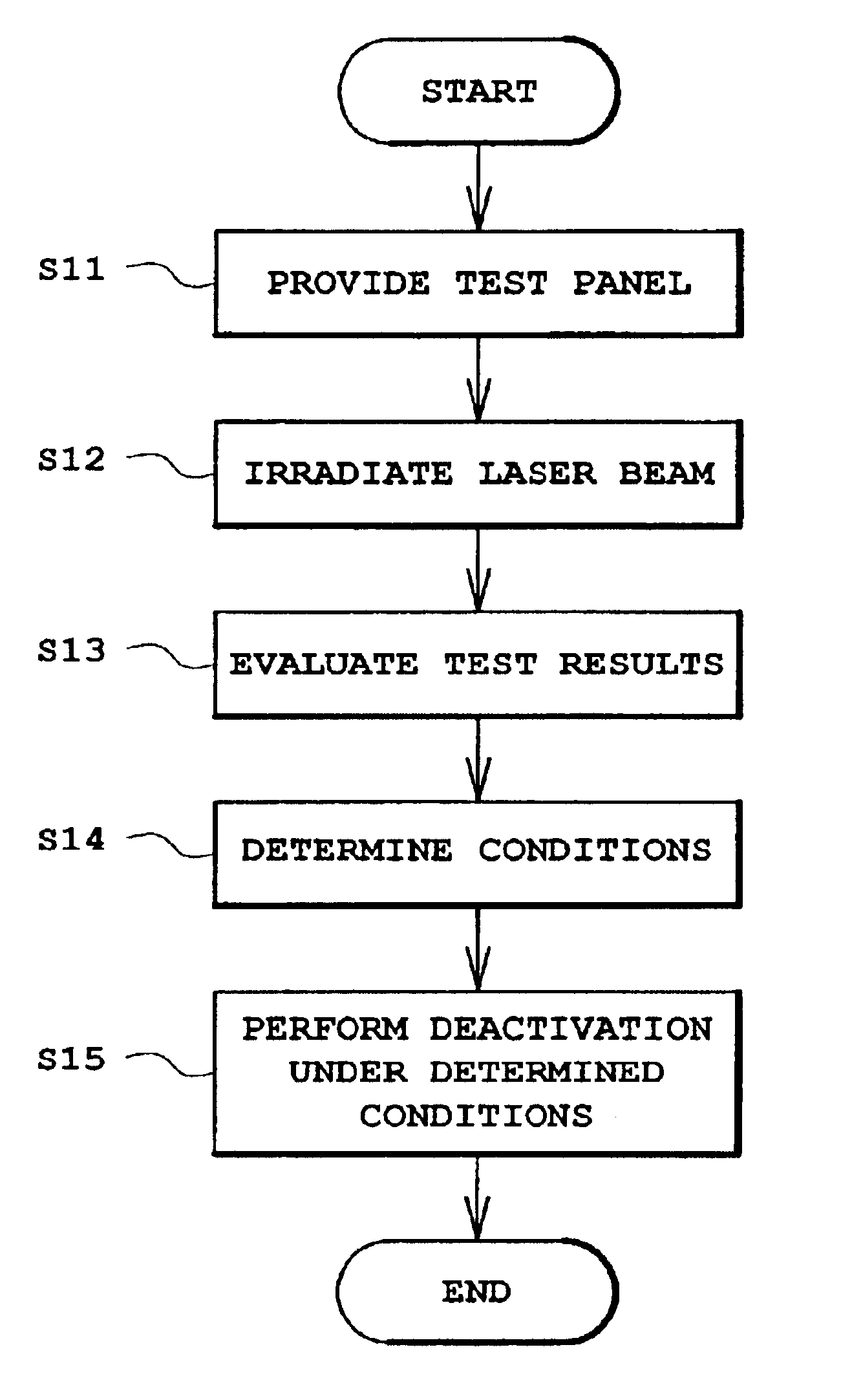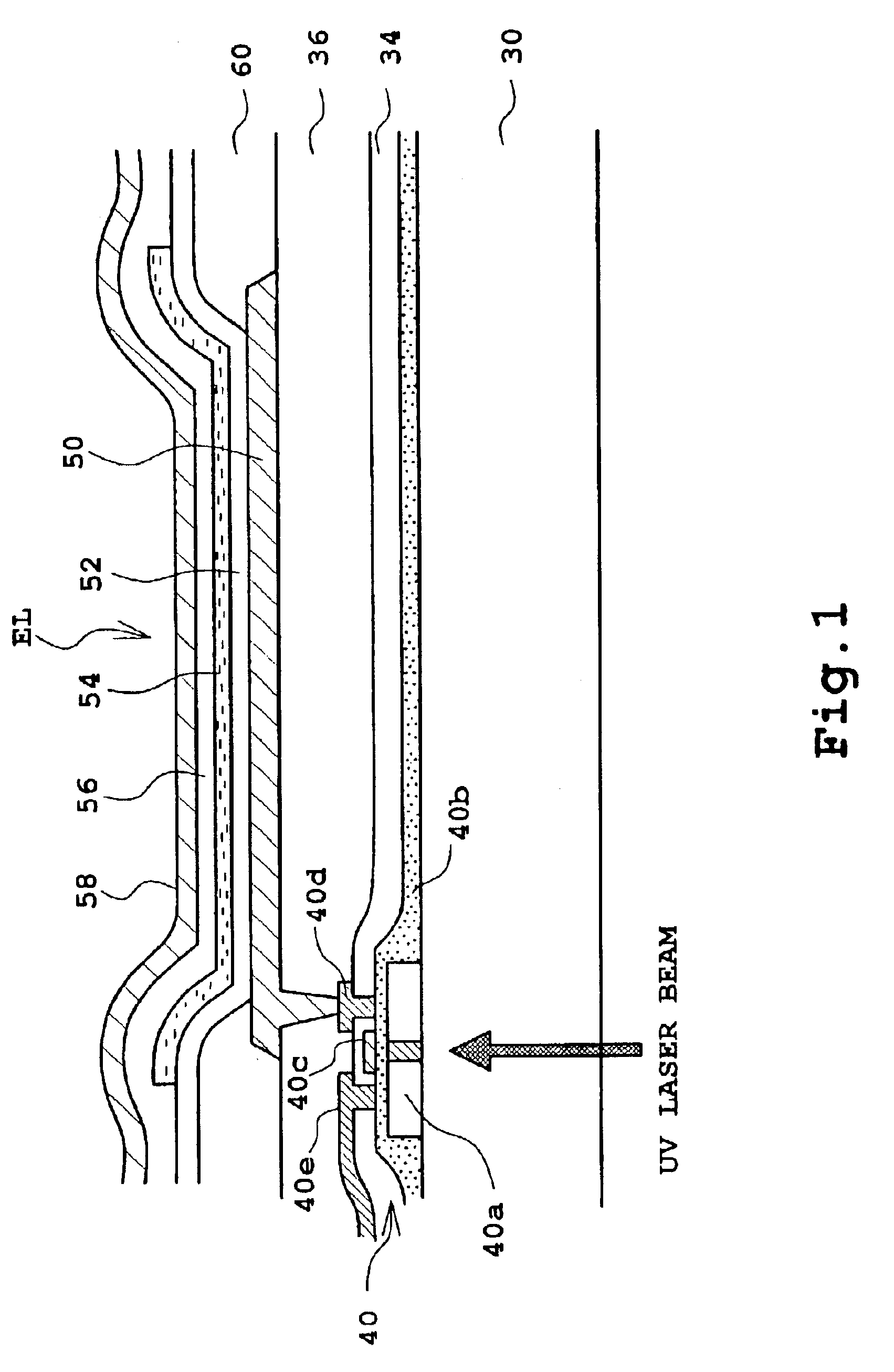Dim-out method for organic EL panel
a technology of organic el panel and dimming method, which is applied in the direction of discharge tube luminescnet screen, static indicating device, instruments, etc., can solve the problems of deteriorating quality in the anode, damage to the cathode and further effects of other pixels, and ablation or other damage, so as to achieve the effect of dimming out a defective pixel
- Summary
- Abstract
- Description
- Claims
- Application Information
AI Technical Summary
Benefits of technology
Problems solved by technology
Method used
Image
Examples
Embodiment Construction
A preferred embodiment of the present invention will now be described with reference to the accompanying drawings.
In this first example of the embodiment, a laser beam is irradiated from the underside of a gate electrode of a TFT, so as to allow the laser beam to cause micro-ablation in a semiconductor layer composed of polysilicon positioned beneath the gate electrode. Crystallinity of the semiconductor layer is thereby disintegrated to increase its resistance and lock the TFT in the OFF state. It should be noted that the laser beam is reflected by the gate electrode, such that the laser beam is effectively irradiated on the semiconductor layer without causing undesirable influences in layers located above the gate electrode.
Preferably, the laser employed is an ultraviolet (UV) laser such as a 355 nm YAG laser or a 308 nm excimer laser. If the laser has a longer wavelength, ablation may also be caused in the gate electrode during the process for disintegrating the semiconductor lay...
PUM
 Login to View More
Login to View More Abstract
Description
Claims
Application Information
 Login to View More
Login to View More - R&D
- Intellectual Property
- Life Sciences
- Materials
- Tech Scout
- Unparalleled Data Quality
- Higher Quality Content
- 60% Fewer Hallucinations
Browse by: Latest US Patents, China's latest patents, Technical Efficacy Thesaurus, Application Domain, Technology Topic, Popular Technical Reports.
© 2025 PatSnap. All rights reserved.Legal|Privacy policy|Modern Slavery Act Transparency Statement|Sitemap|About US| Contact US: help@patsnap.com



